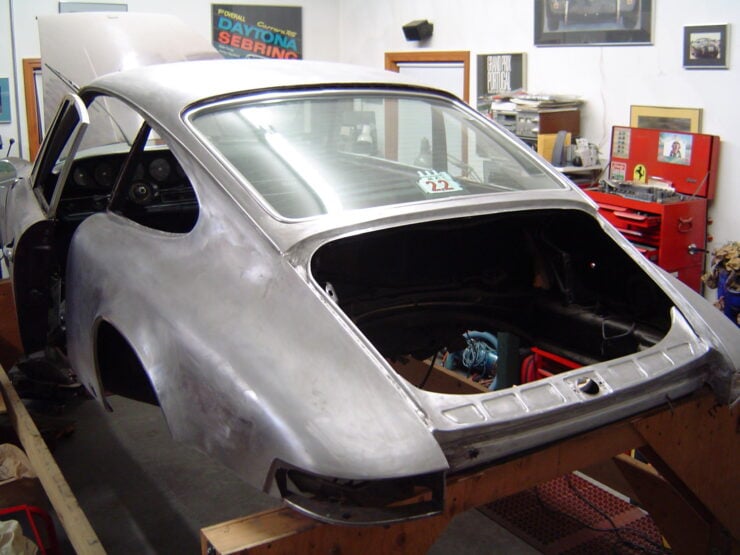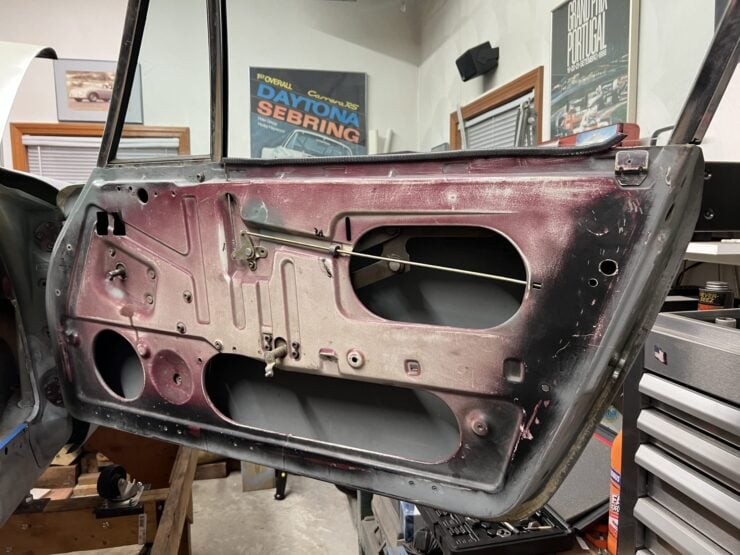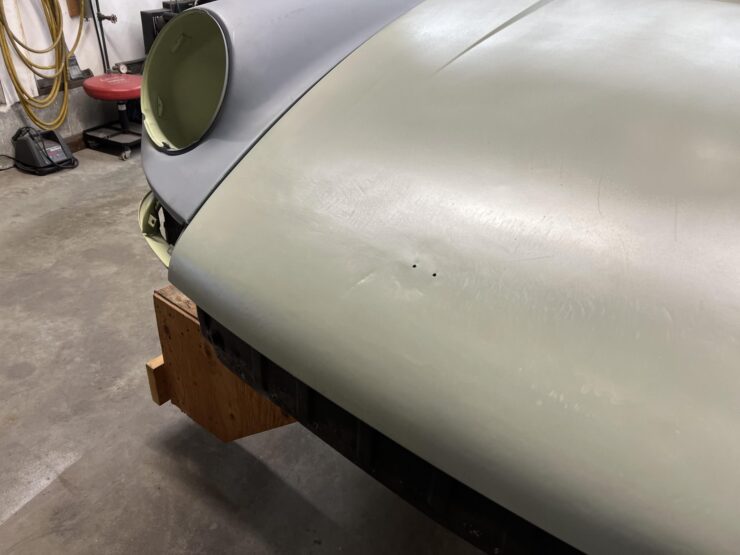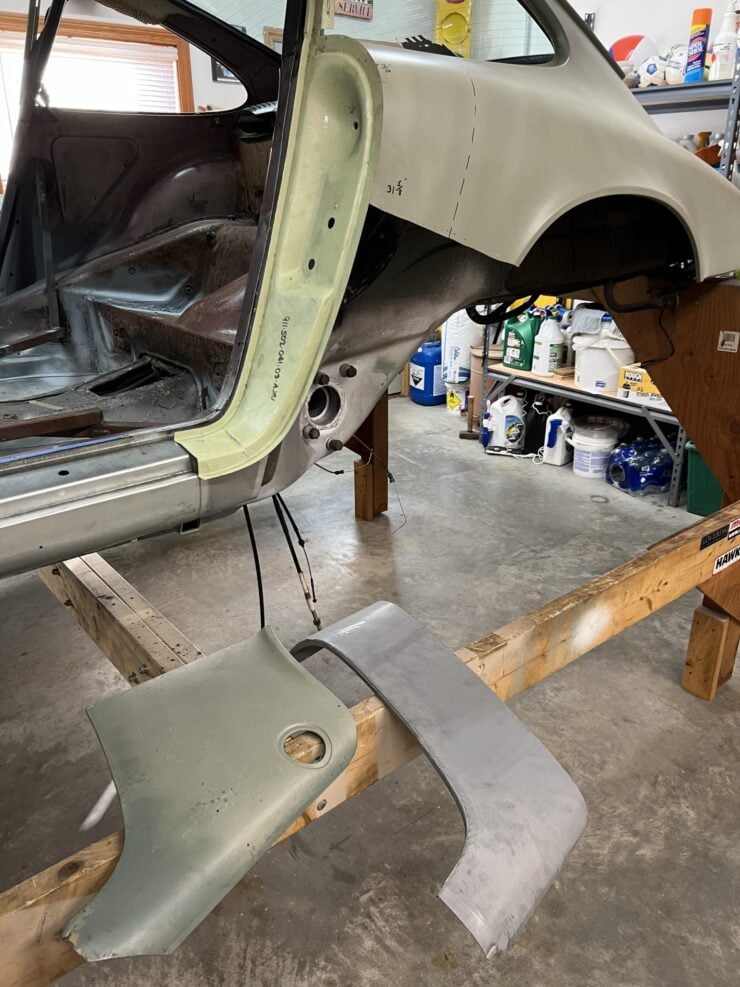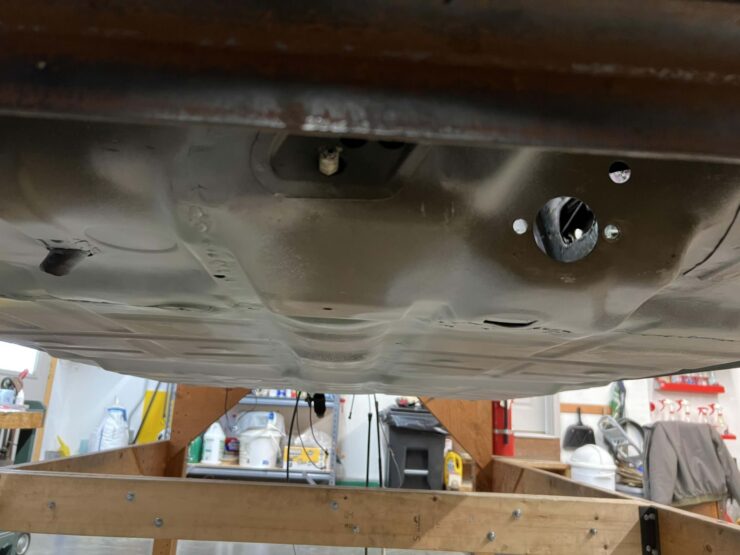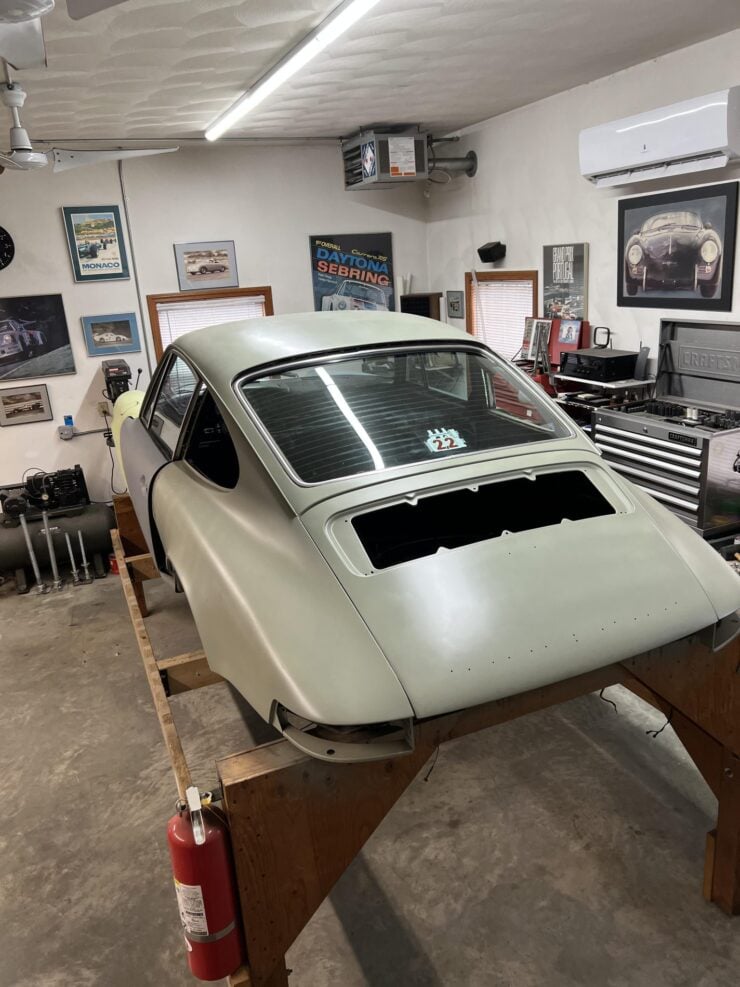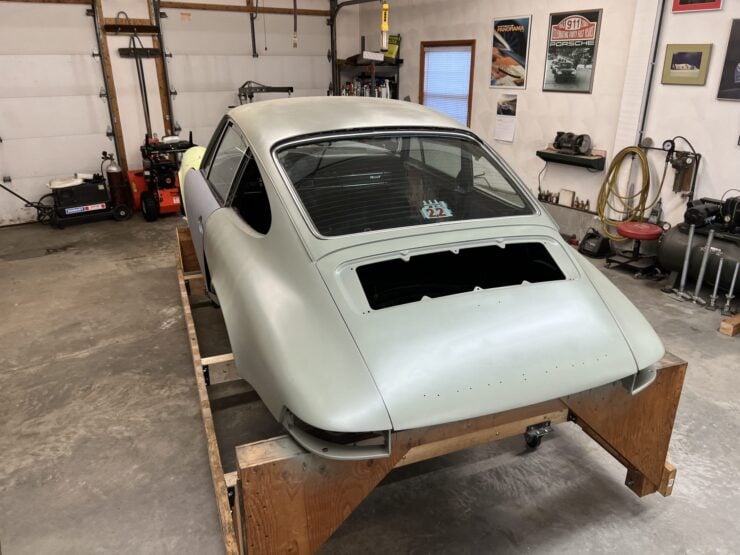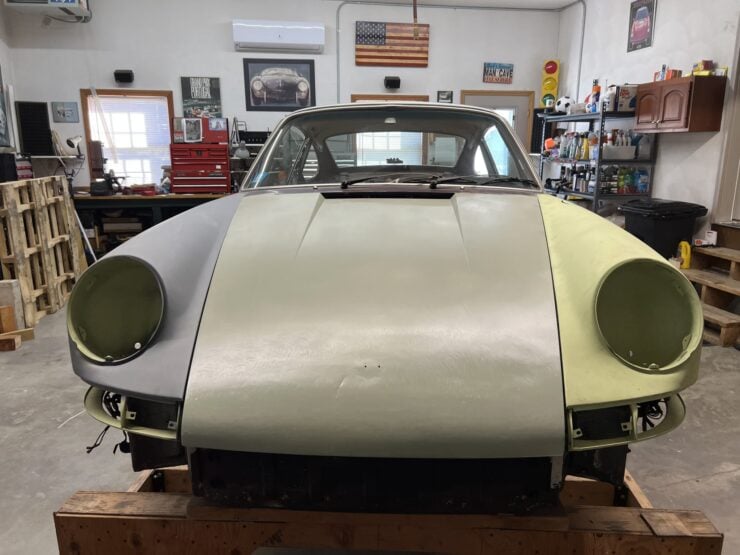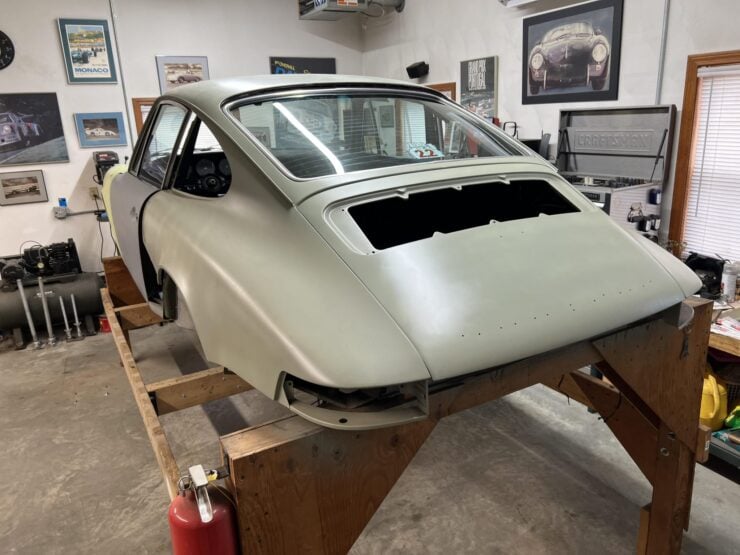This is a 1970 Porsche 911T that was involved in a parking lot dingle many decades ago, resulting in damage to one of the doors. Its rebuild was stalled in the 1980s, and it’s now being offered for sale as a project car in the hopes that the new owner will finish the job.
Pre-impact bumper Porsche 911s like this are highly desirable among enthusiasts and collectors, particularly cars with a match numbers engine included like this one. It’s going to take plenty of work to get it back on the road of course, but for the right person (or team) it could make an excellent project.
Fast Facts – The Porsche 911T
- This 1970 Porsche 911T is a partially restored project car, it sustained door damage in a decades-old parking lot accident. The vehicle retains its numbers-matching 2.2 liter flat-six engine, rebuilt with upgraded 911E pistons, camshafts, Weber carburetors, and Carrera-style tensioners, along with a rebuilt 5-speed manual transmission.
- Initially launched in 1967 as the budget-friendly “Touring” variant eventually replacing the Porsche 912, the 911T was originally equipped with a 110 bhp, 2.0 liter engine. It was popular due to affordability and practicality, despite simplified interiors and lower specifications compared to higher trims like the 911S, which offered 160 bhp.
- The 1970 model year introduced significant upgrades for the 911T, including a more powerful 2.2 liter engine producing 125 bhp. All 911 models received a slightly extended wheelbase starting from 1969 to mitigate the vehicle’s tendency for lift-off oversteer, although overall vehicle length remained essentially unchanged.
- This particular project car features original Burgundy paintwork, a black leatherette interior, factory-installed air conditioning, and structural repairs including new rocker panels, floors, and torsion tube. Offered in Somerset, Massachusetts, it includes extensive spare parts, 14-inch Fuchs wheels, service records, and Porsche Certificate of Authenticity.
The Porsche 911T
The Porsche 911T made its debut in 1967 for the 1968 model year, the “T” stands for “Touring,” and the car was offered at a lower price point to replace the outgoing Porsche 912 model.
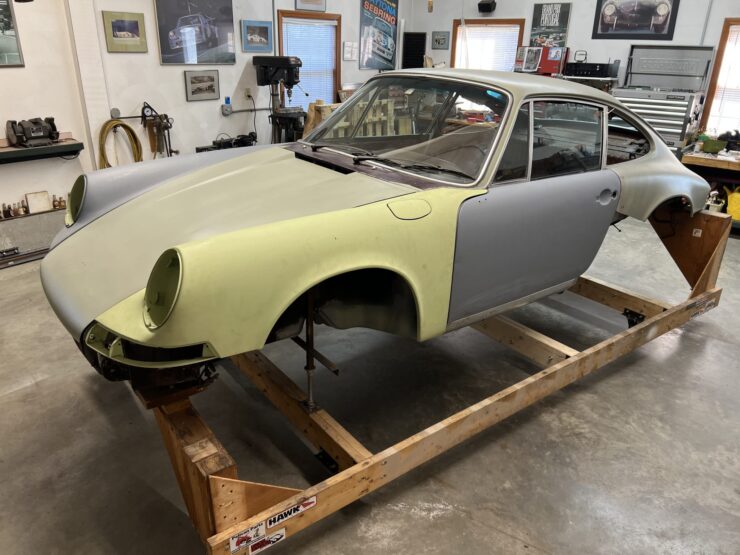

The 911T was overlooked by collectors for many years due to the fact that it was the cheapest 911 variant when it was introduced, and it came with a less powerful engine, a more simple interior, and a 4-speed rather than a 5-speed manual transmission (though the 5-speed was an optional extra).
When it arrived on dealership floors in 1967, the Porsche 911T was fitted with the 2.0 liter Type 901/03 flat-six engine with Weber carburetors, offering 110 bhp at 5,800 rpm and 116 lb ft of torque at 4,600 rpm – representing a solid improvement over the flat-four in the 912.
The Porsche 911T: Power + Specifications
Above the 911T in the model range were the 130 bhp 911L, with the 911S at the higher end, the latter being the most powerful road-going Porsche 911 of the time, with 160 bhp at 6,600 rpm.
Thanks to its lower price, the 911T was a strong seller for Porsche, and for most drivers it was the best option, with solid performance by the standards of the time, excellent reliability, seating for four, reasonable fuel economy, the same basic chassis and suspension layout as the more expensive models, albeit with softer settings and simpler trim.
Inside the 911T you would find a slightly more budget layout, with less-costly Perlon carpeting, no wooden trim or velour upholstery. The car still offered that much-loved 911 driving experience though, and it did it all without the perceived indignity of the 912 badge on the back.
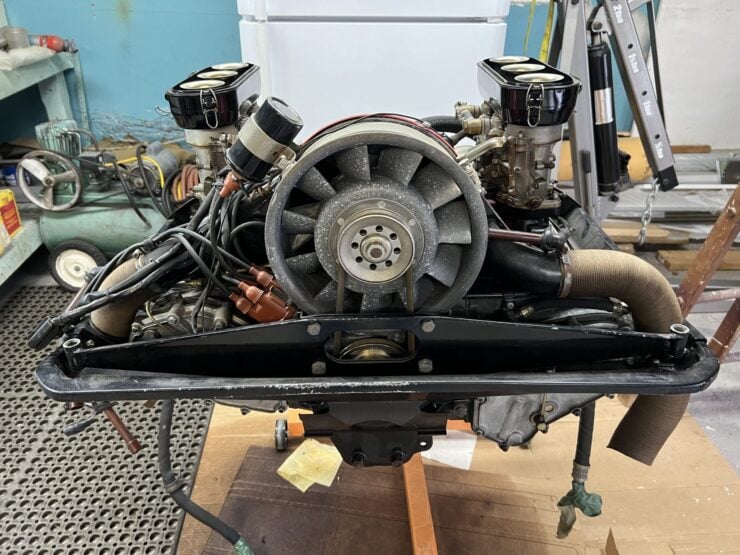


For 1969 all versions of the Porsche 911, including the 911T, were given a slightly longer wheelbase (57mm) in order to help address the habit the car had of understeering at the limit in the hands of less skilled drivers, particularly those drivers unfamiliar with the phrase “lift-off oversteer.”
Interestingly, the overall length of the car was essentially unchanged, the wheels were just moved back.
The 2.2 Liter 911 Arrives
The 1970 model year would see a more powerful 2.2 liter version of the air-cooled Porsche flat-six engine arrive for the 911 family, including the 911T which now had 125 bhp. These engines had a lighter-weight cast magnesium crankcase, as well as larger valves and ports, stronger connecting rods, and a number of other minor changes.
The 911T would be discontinued after the 1973 model year as Porsche transitioned to new models, possibly as a way of pushing more budget-minded buyers into the arms of the Porsche 914, so as not to dilute the prestige of the 911.
The 1970 Porsche 911T Project Car Shown Here
As noted in the introduction, this is a 1970 Porsche 911T that has been stored as a stalled restoration for a number of years. As a 1970 model year car, this vehicle received the more powerful 2.2 liter engine at the factory, an engine it still has today.
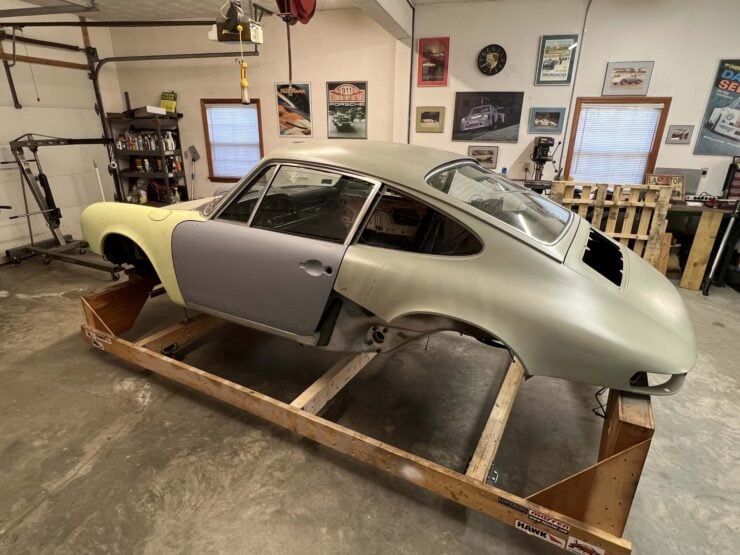


The original transmission is a 5-speed unit that’s said to have been rebuilt and had replacement first and second-gear synchros fitted. The engine has also reportedly been rebuilt, and is now fitted with 911E pistons and camshafts as well as Carrera-style tensioners, Weber carburetors, and hand-fabricated heater boxes.
This car was originally delivered from the factory wearing Burgundy (24) paintwork over a black leatherette interior, and it was fitted with air conditioning.
It now comes with 14” Fuchs wheels, brake and suspension components, the unibody shell, and many other parts like H4 headlights with European-style chrome trim rings, trim items, interior components, and other mechanical parts.
The car has had cross-bracing applied to provide strength and structural integrity while inner rocker panels, longitudinal sections, and front and rear floor sections were replaced. The torsion tube was replaced as well as the corresponding sheet metal sections, a replacement right door skin was sourced from Stoddard, and the seller is also supplying a replacement door.
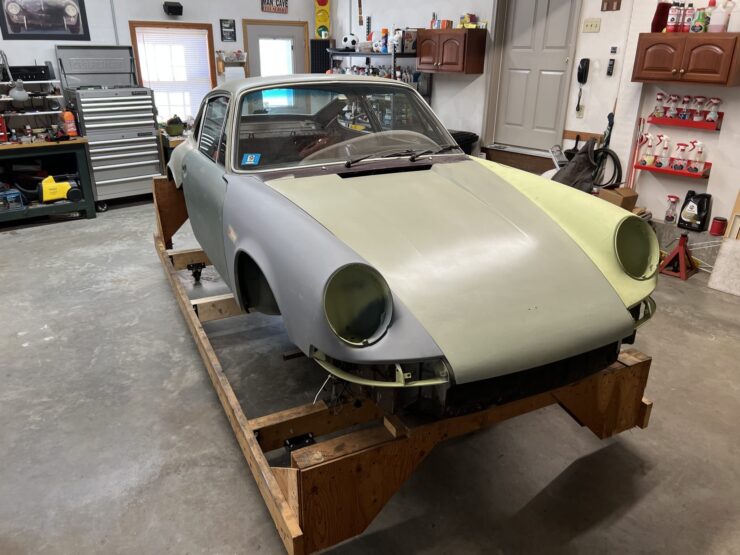


It’s clear that there’s plenty of work left to do on this car, the body needs attention to get it completed, and the new owner may opt to rebuild the engine again and inspect the inside of the transmission, just as an insurance policy on reliability before it all goes back in the car.
The car is now being offered for sale on Bring a Trailer out of Somerset, Massachusetts with a Porsche Certificate of Authenticity, service records, and a clean Massachusetts title in the seller’s name. If you’d like to read more about it or place a bid you can visit the listing here.
Images courtesy of Bring a Trailer
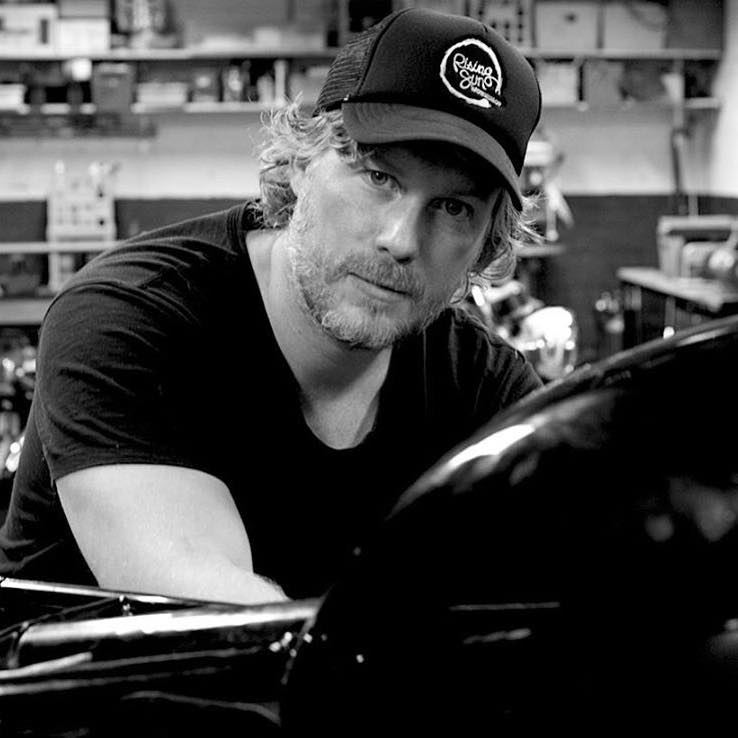

Articles that Ben has written have been covered on CNN, Popular Mechanics, Smithsonian Magazine, Road & Track Magazine, the official Pinterest blog, the official eBay Motors blog, BuzzFeed, Autoweek Magazine, Wired Magazine, Autoblog, Gear Patrol, Jalopnik, The Verge, and many more.
Silodrome was founded by Ben back in 2010, in the years since the site has grown to become a world leader in the alternative and vintage motoring sector, with well over a million monthly readers from around the world and many hundreds of thousands of followers on social media.


